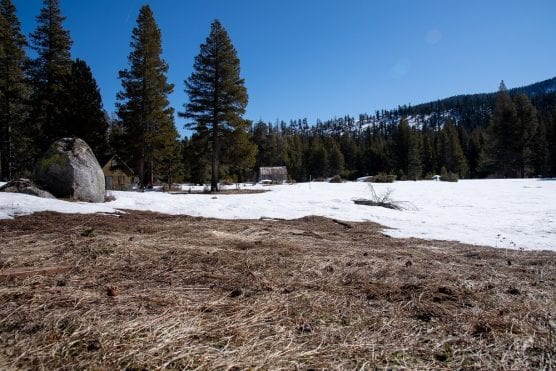The California drought situation worsened in February to cover nearly a quarter of the Golden State, amid the likelihood of no measurable rain across a wide swath of Northern California for the first time in recorded history.
A report published Tuesday shows moderate drought in Central California. According to the U.S. Drought Monitor report, an estimated 5.9 million Californians are living in drought areas with nearly 23% caught in moderate drought conditions.
Storms that should have made their way to the interior of California have been pushed north or south due to a huge and unusually strong high-pressure ridge off the Pacific Coast. Rain instead fell in the Pacific Northwest, southwestern Canada or Baja California, leaving much of California, Nevada northern Utah and southern sections of Oregon dry.
The ridge of high pressure currently parked off the coast is reminiscent of the “ridiculously resilient ridge” that helped spur California’s historic drought, which stretched from 2011 to 2017 and saw the driest period since meteorologists started keeping records in 1895.
The drought report’s authors, meteorologist David Miskus and climatologist Ahira Sánchez-Lugo with the U.S. National Oceanic and Atmospheric Administration, write, “Unfortunately, this pattern has remained entrenched during much of January and February, normally the two wettest months of the year for California, and has greatly diminished the good (wet) start to the water year.”
Remarkably, some parts of California could see February pass by without any recorded rainfall. Meteorologist Sierra Littlefield with the National Weather Service in Sacramento told Courthouse News that the state capital will likely see a completely February.
“Northern parts of the state have been about 10 to 20 degrees above average in interior but that should drop over the weekend,” Littlefield said, as a cold but mostly dry storm will bring little moisture to the region.
Meanwhile, the monthly snow survey took place Thursday near South Lake Tahoe, recording a snowpack that is below average for this time of year according to the state Department of Water Resources. Automated stations reported a snowpack at 97% of average at the beginning of January, a figure that shrank to 79% later in the month and sat at just 47% of average Thursday.
The manual reading of 29 inches of snow Thursday stands in stark contrast to a year ago, when water officials reported a snowpack of 153% of average. The strength of that snowpack means the state’s reservoirs remain in good shape even now, but rain and snow are still desperately needed in a state that grows a large portion of the nation’s food and has nearly 40 million thirsty people.
Typically, California sees about half of all its annual rainfall from December through February. The Sierra snowpack provides about 30% of the state’s water in runoff in the spring and summer.
— By Nathan Solis
Like this:
Like Loading...
Related





 Tweet This
Tweet This Facebook
Facebook Digg This
Digg This Bookmark
Bookmark Stumble
Stumble RSS
RSS


























REAL NAMES ONLY: All posters must use their real individual or business name. This applies equally to Twitter account holders who use a nickname.
0 Comments
You can be the first one to leave a comment.